New approaches to nonclinical workforce management
Job fatigue touched every aspect of healthcare during the pandemic, with nearly one out of two nonclinical healthcare professionals experiencing feelings of burnout due to work overload, a recent study found. Levels of prolonged stress are so high, about one-third of nonclinical workers say they have considered leaving the profession because they cannot keep up with unrealistic demands for productivity and efficiency and the impact of these demands on well-being.
Now, as experts evaluate how to decrease stress for nonclinical healthcare professionals — from revenue cycle management (RCM) to patient access to healthcare IT — they must consider whether the remote and hybrid work models that emerged during the pandemic have staying power. They also must explore ways to keep remote employees engaged and productive while creating a sense of belonging — a key to retaining talent and maintaining well-being.
In this recent roundtable conducted by the Healthcare Financial Management Association (HFMA) and sponsored by CommerceHealthcare®, five healthcare leaders in RCM and patient access share their approach to workforce management in a remote and/or hybrid model and lessons learned along the way.
What approach is your organization taking around remote or hybrid work for revenue cycle or patient access?
Robert Dewar: I do have some people who work with patients in person, such as registrars in our emergency departments (EDs) and financial counselors who go to inpatient floors to meet with patients. However, other than those employees, we are virtually all remote on the revenue cycle side, and that encompasses nearly 1,000 people. Except for small numbers of people who really want to work in the office — and we still have the space to allow them to do that — we’re operating under a remote work model. And even those employees who work in the office will be encouraged to shift to remote work eventually.
Romina White: The majority of our 5,300-employee patient services (PS) team is on-site in hospitals or in centralized offices. Even pre-COVID, we had service lines within PS that worked remotely, such as our pre-service teams, quality control, process and training teams. Our revenue cycle organization’s comprehensive [and]hybrid remote-work approach, extending beyond patient access, facilitated a swift and effective response to pandemic challenges. It enabled us to quickly transition our workforce to remote settings, ensuring our adaptability to unprecedented circumstances. From a patient access perspective, we continue to review the work we do for remote feasibility so that we are able to alleviate the workload of our hospital-based front-line teams, allowing them to prioritize the patients directly in front of them.
Sharon Kelley: Mayo has a centralized revenue cycle process. We have approximately 2,200 employees, and with the exception of registration and financial counselors, 90% of our team is totally remote. Currently, our team is located in 43 states, while our organization provides services in four states.
Nicole Robinson: We’re 100% hybrid in revenue cycle. We have mission partners who come into the office, and we have others who work at home, and it’s all by choice. We have never asked anyone to come back to the office unless it’s due to a progressive discipline or productivity issue. If mission partners choose to work at home, we allow that to continue. My role here is hybrid as well. I do tend to spend more time in the office just because that’s what I’m used to doing, and I like that separation of work and home. In patient access, our team is on-site. During COVID-19, we did get creative in this area, building in ways to do remote registration so our team would not have to go into patient rooms, especially in the ED or inpatient setting. But unfortunately, these staff members don’t really get the choice to do this work from home because of the nature of what they do. Our financial clearance team members come in once a week if they need to print things or if there is something happening on-site, and they’d like to work in the office for the day. Our health information management team rotates in-office coverage. This manages their functions and their schedules, and that has worked really well for us.
Sue Martin: We’re 100% hybrid across our revenue cycle teams relating to sales, implementation, product, IT and support. Our local and expansion market team members target two to three days in the office per week. We, too, expanded our virtual teams across the country over the past couple of years. As mentioned by the members of the panel, their experiences are common across our client base. A hybrid workforce has brought about additional virtual meetings and communication versus prior to COVID, when the majority of all client meetings took place on-site.
How have you redesigned your workflows to account for remote or hybrid work?
White: The majority of our workflows can be done on-site or remote, and since we had already moved to a remote model in many of our support services prior to COVID, it wasn’t about workflow changes; it was about how we could stay meaningfully engaged with our employees and stakeholders. That clinic leader, for example, may not be able to walk down the hallway to speak to a scheduler. One key change when moving to remote is hardwiring and expanding effective communication pathways between teams. Process and workflow improvement is always a focus regardless of where our employees are homed.
Robinson: We have forced ourselves to finally go paperless. As an industry, we rely so much on printing and the signing of things in a physical environment. It was a huge adjustment to lean into electronic signatures and transfer of information. It’s also been a challenge to ensure we have the workflows and technology needed to share confidential information electronically rather than printing things out and carrying them around and getting authorization on paper. It has been hardest for our long-term employees to let go of their reliance on paper, but we’ve used change management tactics to navigate this transition with our team.
Kelley: I would say the redesign of workflows is coming more from the adoption of automation within revenue cycle. We’re in the process of implementing 25 bots this year. As we rely more heavily on automation, we’ve had to redesign workflows to allow our staff to focus on where they are most effective, complementing that new strategy.
Dewar: Our revenue cycle teams are still performing the same functions; they’re just tackling those functions in a different way. When it comes to managing productivity, our leaders provide guidance on ways to solve problems and overcome barriers through open chat lines and individual groups in the same way they used to provide this guidance in an office environment. The group’s setup has been much easier than I would have anticipated, and our employees’ willingness to adapt and change and still be responsible for getting things done has been extraordinary. Fortunately, our technology provides a number of tools that help us see what people are actually touching and producing, too. We’ve been able to maintain and even improve our performance despite not being in an office, and frankly, we’re still trying to determine why that has been the case so we can carry those learnings forward.
Martin: The panel provides valuable input to this question. As our teams migrated to remote/hybrid work, clients have dealt with challenges related to communication, employee engagement, work toward automation and best uses of technology. At CommerceHealthcare®, these top client priorities also hold true not only to our internal teams, but also in delivering to our client base.
Which of these three challenges — workforce shortages, turnover or a competitive talent market — do you consider to be of the highest concern now?
Kelley: I’d say maintaining a competitive talent market is our biggest challenge. We’re moving very quickly on our transformation in a post-COVID environment, but we’re highly dependent on a team that stays together and is cohesive in that process.
Robinson: Workforce shortages are our greatest challenge, especially for entry-level positions. We just do not have the workforce we did pre-COVID in any of our markets.
White: The pipeline of candidates has increased, but the candidates have categorically changed what they are looking for in a job and employer. We’ve re-engineered our processes all the way upstream to the moment of recruiting so we can engage candidates differently. If you wait a second too long, that right person might have already jumped to a different offer. From there, we’re embarking on ways to onboard new employees more quickly and efficiently while giving them the tools for success and the feeling that they are a valued member of the Conifer team. Then it really is up to our teams, from leader to coworker, to focus on meeting those most basic needs so [the new employees] can really envision these roles as possible long-term opportunities. Retention is everyone’s responsibility, not just that team member’s direct leader.
Dewar: For most of my staff in RCM, I do not feel like I’ve had extraordinary turnover. We’re in a rural area, and I’ve heard from colleagues in urban areas where that’s a bigger problem. Where I see challenges is in our ability to fill jobs that are more specialized and in high demand across industries, such as IT. When we lose people who have expertise in certain systems or in analytics to more lucrative positions outside healthcare that they can also perform remotely, that leaves a significant gap that is hard to fill in a competitive hiring environment.
Martin: While all of those challenges are certainly top of mind, we are finding the competitive talent market to be of the highest concern at this time. Mr. Dewar noted filling the jobs that are more specialized and in high demand, such as IT, are perfect examples. The talent is certainly specialized and requires extended onboarding for those who may have some form of healthcare exposure versus having solid revenue cycle experience, along with understanding the complexities of the regulations and requirements.
What steps are you taking to address employee satisfaction in a rapidly changing environment?
Martin: One of the greatest accomplishments achieved over the years is our investment in workplace culture. A driving force of what we do each day is to ensure we’re listening and recognizing our team members. A major request from our healthcare team members is to have leadership be timelier on the pace and communications related to decision-making. We have adopted multiple forms of communication, such as town halls, newsletters, online communication boards and an enhancement of one-on-one sessions in order to meet the needs of the team. Getting out there, being visible virtually or in-person, is a great way for all of us to connect and communicate with one another.
White: Two main questions we are continuously asking are, number one: What satisfies employees? This involves understanding their basic needs such as leadership engagement, growth opportunities, learning objectives and recognition. How can we make them feel valued — through regular communication or individual conversations highlighting their contributions?
Second: How do we adapt to changing workforce needs? Many employees prefer quick, visually engaging learning experiences and easy access to information. We promote active participation and team cohesion by encouraging cameras-on during video calls. Regular touch bases with leaders are essential for remote employees, providing additional support beyond their direct supervisor.
In today’s dynamic environment where we need our team to stay longer than maybe they first intended, we invest in meaningful engagement and balance it with effective leadership. We need to leverage agile platforms to ensure employees feel engaged, supported and recognized.
Robinson: Everybody is struggling with margin repair now across the industry. We’ve really tried to be flexible about schedules, trying to meet our business needs while still meeting the personal needs of our employees as well, and that’s helped us reduce turnover. Before COVID, we were very much an 8-to-5 organization in RCM. That’s not to say that our mission partners don’t feel the stress of long hours and being short-staffed, but based on the improvement shown in our last employee survey and the appreciation we see when we make rounds on the floor, I’m optimistic about the impact we’re making with our team.
To what extent is your organization exploring automation to increase efficiency or productivity?
Dewar: We’re taking advantage of the technology that’s available to us. We’re also dipping our toes into the water when it comes to automating coding. We’re starting with ED and radiology and then moving out to other specialties. Coding is an area where we have trouble finding coders and maintaining a full bench, so that’s a perfect place to be flirting with and adopting technologies that will help us do more work without more bodies.
Robinson: This summer, we plan to roll out self-registration in our EDs, where the patient will receive an email link to complete their own registration if they meet certain criteria. It’s an approach that will not be appropriate for every population, but it could help give us better coverage and provide relief for our employees, some of whom are covering longer shifts in the ED space. It’s an opportunity for staff to focus on work that is more professionally fulfilling. There are some operational challenges to rolling out a new process such as this, but we believe it will definitely be a good solution.
White: Automation is a cornerstone of our revenue cycle, but it can be unsettling for staff if not approached with care. We recognize the importance of ensuring that automation empowers our employees and doesn’t create unintended workforce challenges. Our focus is on identifying areas where automation can free up valuable time, enabling individuals to concentrate on tasks that leverage their expertise and are highly valued. By automating processes like authorization submissions, which don’t require specialized skills, we create opportunities for employees to contribute in meaningful ways. Our evaluation of automation centers around its ability to enhance performance, financial KPIs and patient satisfaction while empowering and nurturing the success of our team in their respective roles.
Dewar: The message I share with staff is, automation is coming, and we need to take advantage of what’s there, but it’s not likely to result in wholesale layoffs. Rather, it’s a tool that will allow us to right-size our organization as we go along.
All in all, there’s no right answer yet when it comes to how we manage remote teams and get work done. I don’t feel as though anyone has a perfect answer when it comes to remote management. It’s going to be an ongoing process for all of us. The more we can evaluate new tools, like automation, and get to a certain level of confidence in applying them to our work, the more agile we will become, and the better able we’ll be to solve business problems without putting more pressure on staff.
Conclusion
The public health emergency resulting from the COVID-19 pandemic may be over, but the effects — including on nonclinical professionals’ administrative workload and their willingness to continue carrying this burden — are likely to linger. Now is the time to consider new approaches to nonclinical workforce management that mitigate tendencies for staff to feel overworked and burned out while improving productivity and professional satisfaction.
Panelists
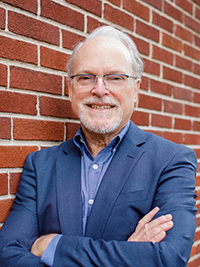
ROBERT DEWAR
Vice president & chief revenue officer at Geisinger Health in Danville, Pennsylvania
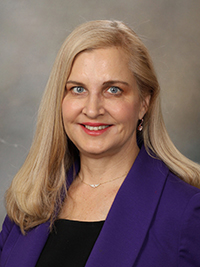
SHARON KELLEY
Chair Revenue Cycle at Mayo Clinic in Rochester, Minnesota
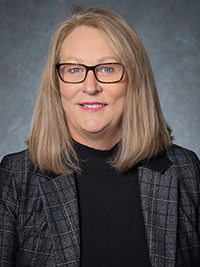
SUE MARTIN
Senior vice president and director of Specialty Healthcare at CommerceHealthcare® in Kansas City, Missouri
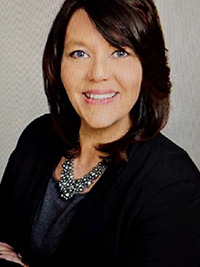
NICOLE ROBINSON, MJ, MBA, CRCR
Vice president of Patient Access and Mid-Revenue Cycle at OSF Healthcare System in Peoria, Illinois
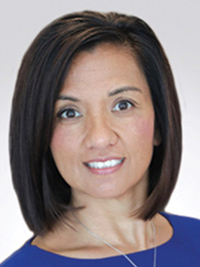
ROMINA WHITE, MEd
Vice president of Patient Services at Conifer Health Solutions in Liberty Lake, Washington
About CommerceHealthcare®
CommerceHealthcare® provides automated receivables management and payment services, patient loan financing and lending solutions. Our team of healthcare and banking professionals understands the business of healthcare and the needs of patients. We can help you find cost savings, improve cash flow, reduce financial risk and create a better patient experience.
CommerceHealthcare® solutions are provided by Commerce Bank.
This published piece is provided solely for informational purposes. HFMA does not endorse the published material or warrant or guarantee its accuracy. The statements and opinions by participants are those of the participants and not those of HFMA. References to commercial manufacturers, vendors, products, or services that may appear do not constitute endorsements by HFMA.





